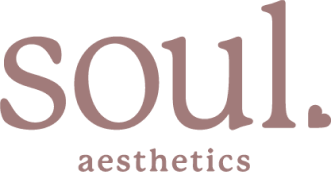
Explaining the Complex Anatomy of the Face
The human face is a remarkably intricate structure composed of bones, muscles, fat, connective tissue, nerves, and blood vessels. These components work together to create facial expressions, define features, and maintain essential functions such as chewing and speaking. At Soul Aesthetics in Tulsa, we specialize in aesthetic treatments that enhance facial harmony while prioritizing safety, precision, and natural-looking results. Understanding facial anatomy is key to achieving optimal outcomes with injectables, skin treatments, and other aesthetic procedures.
The Anatomy of the Face
Every component of the face plays a unique role in its structure, movement, and appearance. From the craniofacial bones that provide support to the muscles and fat pads that shape our features, each element contributes to facial symmetry and balance.
Bones: The Foundation of Facial Structure
The craniofacial skeleton consists of multiple bones that support the skin, muscles, and soft tissues of the face. These bones are responsible for facial contours, jaw alignment, and overall structure.
Key facial bones include:
- Maxilla (upper jawbone) – Supports the midface and holds the upper teeth in place
- Mandible (lower jawbone) – Provides shape to the lower face and enables chewing
- Nasal bone – Forms the bridge of the nose
- Lacrimal bone – Supports the tear ducts and eye socket
- Zygomatic bone (cheekbone) – Creates the definition of the cheeks
- Palatine bone – Forms part of the nasal cavity and the roof of the mouth
These bones serve as anchor points for muscles and soft tissues, influencing both facial aesthetics and function.
Muscles: The Key to Facial Expressions
The muscles of the face allow us to express emotions, speak, and perform essential movements. These muscles are controlled by the facial nerve, which sends signals from the brain to stimulate movement.
Some of the most important facial muscles include:
- Frontalis – Lifts the eyebrows and creates forehead wrinkles
- Orbicularis oculi – Controls eyelid movement and blinking
- Orbicularis oris – Shapes the lips and controls mouth movement
- Zygomaticus – Helps lift the corners of the mouth to create a smile
- Masseter – Assists in chewing and jaw movement
Since many aesthetic treatments, such as Botox and dermal fillers, target specific facial muscles, a deep understanding of muscle placement and function is essential for achieving natural results.
Fat Pads: Volume and Contour
Facial fat pads are pockets of fat located beneath the skin that provide structure, volume, and softness to the face. These fat pads vary in size and placement from person to person, playing a critical role in facial aging.
With age, fat distribution changes, leading to volume loss in areas like the cheeks and temples while increasing in areas like the jawline. This shift can cause hollowing, sagging, or a sunken appearance, which can be addressed through fillers or fat grafting to restore lost volume.
Connective Tissue: Support and Stability
Connective tissue helps maintain the face’s structural integrity by linking muscles, bones, and skin together. It supports facial movements, elasticity, and hydration.
This tissue also plays a role in aesthetic treatments, as strong connective tissue contributes to firm, youthful skin. Treatments such as microneedling, chemical peels, and collagen-stimulating injectables help strengthen connective tissue by promoting collagen and elastin production.
Nerves: Sensory and Motor Function
The facial nerve is the primary nerve responsible for facial movement and sensation. It controls muscle contractions that enable smiling, frowning, blinking, and speaking.
This nerve also connects to other areas of the head, neck, and shoulders, affecting facial balance and symmetry. Precise knowledge of nerve pathways is essential in aesthetic procedures to avoid complications and ensure safe, effective results.
Blood Vessels: Nourishing the Skin
Facial blood vessels deliver oxygen and nutrients to skin cells while removing toxins and waste. These tiny capillaries also influence skin tone and complexion, contributing to a rosy, healthy glow.
Understanding vascular anatomy is crucial for injectables, as improper injection techniques can block blood flow, leading to complications. At Soul Aesthetics in Tulsa, we use advanced techniques and detailed anatomical knowledge to ensure safe, effective treatments.
How Facial Anatomy Impacts Aesthetic Treatments
A deep understanding of facial anatomy is essential for achieving optimal results with aesthetic procedures. Whether it’s injectables, skin rejuvenation, or facial sculpting, precise knowledge ensures natural-looking enhancements and minimizes risks.
Improved Placement of Injectables
Treatments like Botox and dermal fillers require strategic placement in specific muscle groups and fat compartments to achieve balanced, youthful results. Incorrect placement can cause:
- Asymmetry or unevenness
- Lumps and bumps in the skin
- Unnatural or exaggerated expressions
- More serious issues, such as vascular compromise
- Migration or displacement of filler
At Soul Aesthetics, we use advanced anatomical mapping techniques to ensure precise injection placement, creating natural, harmonious results.
Customized Treatment Plans for Every Face
Every person’s facial structure is unique, and no two treatment plans should be identical. By analyzing bone structure, muscle movement, fat distribution, and skin condition, we develop personalized treatment plans that enhance your natural beauty without looking overdone.
Minimizing Side Effects and Risks
A thorough understanding of facial anatomy helps to reduce the risk of complications. Knowing how to avoid sensitive nerves and blood vessels minimizes issues like:
- Bruising and swelling
- Unwanted muscle weakness
- Prolonged redness or irritation
This is why choosing trained, experienced professionals for aesthetic treatments is so important.
Enhanced Communication with Patients
At Soul Aesthetics, we believe in educating our patients about their treatment options. By explaining how facial anatomy affects aesthetic results, we help our clients make informed decisions about their procedures.
Trust Soul Aesthetics for Expert Facial Aesthetic Treatments
Facial anatomy is complex and highly individualized, which is why understanding its intricacies is essential for achieving beautiful, natural results. At Soul Aesthetics in Tulsa, our team of skilled professionals uses their expert knowledge of anatomy to deliver safe, precise, and customized treatments.
We utilize an ultrasound device that allows us to assess facial anatomy with even greater accuracy—especially for those who have had filler treatments in the past. This advanced technology sets us apart, as very few med spas offer this level of precision. By incorporating ultrasound imaging, we can take a more informed approach to ensure the best possible results for every client.
Whether you’re looking for Botox, fillers, skin rejuvenation, or other facial treatments, you can trust us to enhance your natural beauty with subtle, refined results. Book a consultation today and discover how our expert approach can help you look and feel your best.
